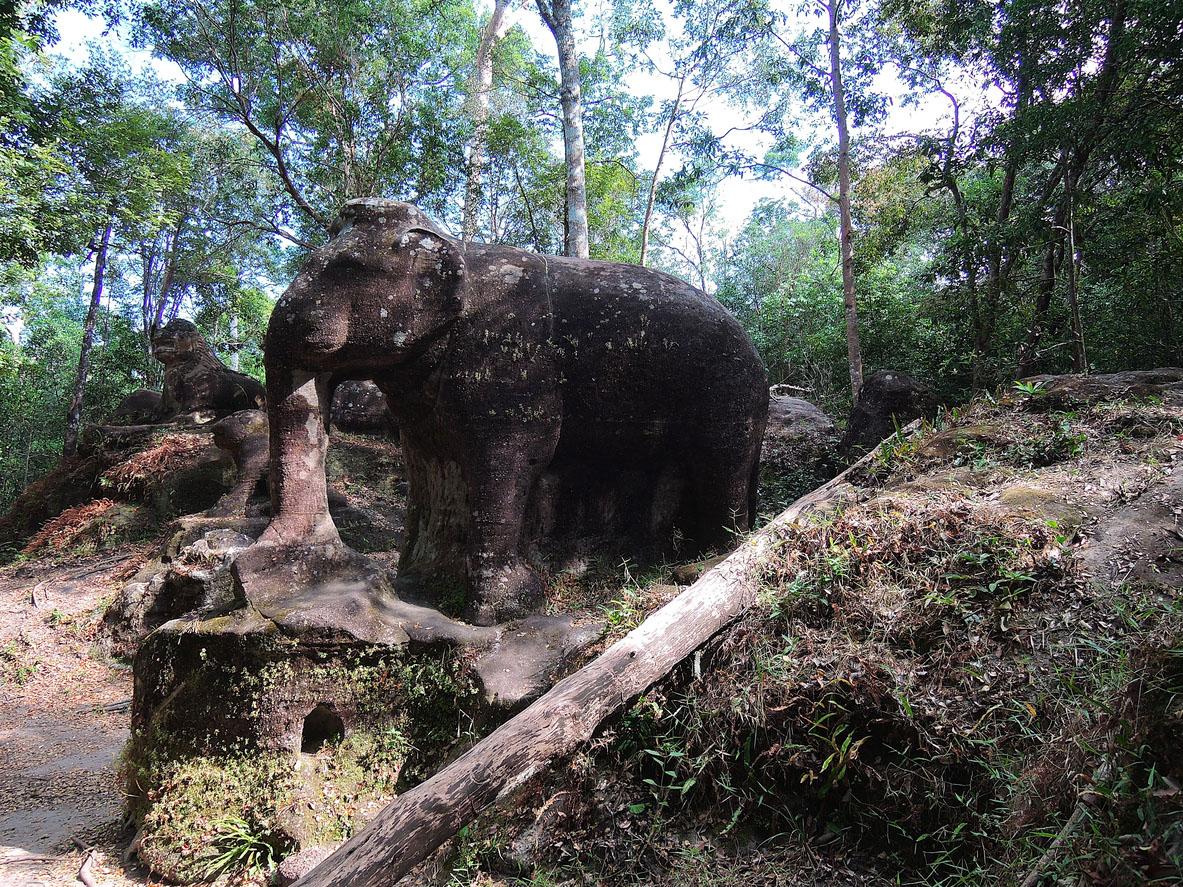Huge medieval cities unearthed in Cambodia near Angkor Watt
Cutting-edge laser technology was used to discover a number of new sites near Angkor

It's known as one of the most popular tourist destinations in the world, but now the area around Cambodia's magnificent temple complex at Angkor Watt could be home to even more significant archaeological findings after scientists revealed that cutting-edge laser technology has unearthed numerous vast medieval cities buried under the tropical forest floor – some of them believed to be larger than the country’s capital Phnom Penh.
Researchers believe the metropolises are between 900 and 1,400 years old and lie not far from Angkor Wat, the ancient temple complex in the north-east of the country.
Dr Damian Evans, an Australian archaeologist funded by the EU, has published these findings in the Journal of Archaeological Science.
Further investigation into these discoveries could result in groundbreaking developments in our understanding of south east Asian history, Dr Evans told the Guardian.
“We have entire cities discovered beneath the forest that no one knew were there,” he said.
One of the cities whose existence has been revealed through analysis of data collected in a 2015 aerial study – the most extensive of its kind covering 734 square miles – is located at Preah Khan of Kompong Svay, an archaeological site about which, until now, relatively little has been known.
In a similar study in 2012, Dr Evans and his team uncovered part of the ‘lost city’ of Mahendraparvata on Phnom Kulen.

Now they have found evidence of an even bigger area which was once densely inhabited – and could form part of the largest empire on earth at the time, some experts have said.
“This time we got the whole deal and it’s big, the size of Phnom Penh big,” said Dr Evans.
Angkor Archaeological Park, a Unesco World Heritage Site, stretches over 400 square kilometres and is home to Angkor Wat, the largest religious monument in the world which appears on the Cambodian flag.
The site is popular with travellers and was last year named the most attractive tourist destination in the world by the Lonely Planet guide.
Dr Evans, a fellow at École Française d’Extrême-Orient in Siem Reap, used cutting-edge light detection technology known as lidar to conduct his research in the region.
He used scanners to fire lasers to the ground from a helicopter and measure how long it took for each pulse to bounce back, creating an extremely detailed 3D model of the Earth’s surface.
The technology can penetrate dense forest canopies to detect buildings as well as the remains of roads, aqueducts, caves and manmade borders between different areas.

“I think that these airborne laser discoveries mark the greatest advance in the past 50 or even 100 years of our knowledge of Angkorian civilisation,” American archaeologist Michael Coe told The Guardian.
The findings from this study combined with Dr Evans’s first lidar survey in the region in 2012 could challenge theories on the development and decline of the Khmer empire, which ruled over most of mainland south-east Asia from around 802 AD and was at its most powerful in the 12th and 13th centuries when it was home to around 100,000 people.
The empire began to decline in the 15th century. It has so far been thought this was largely caused by a combination of the breakdown of the political system, plague, foreign invasion and environmental factors.
The report says that the remarkable findings will help scientists look at what really caused the declined and how the complex relationship between man and its impact on the environment could have influenced this fall.
The report adds that the findings are part of a growing number which are “increasingly showing that the extent of anthropogenic changes to ‘natural’ landscapes during the past few thousand years has so far been substantially underestimated”.
Join our commenting forum
Join thought-provoking conversations, follow other Independent readers and see their replies
Comments